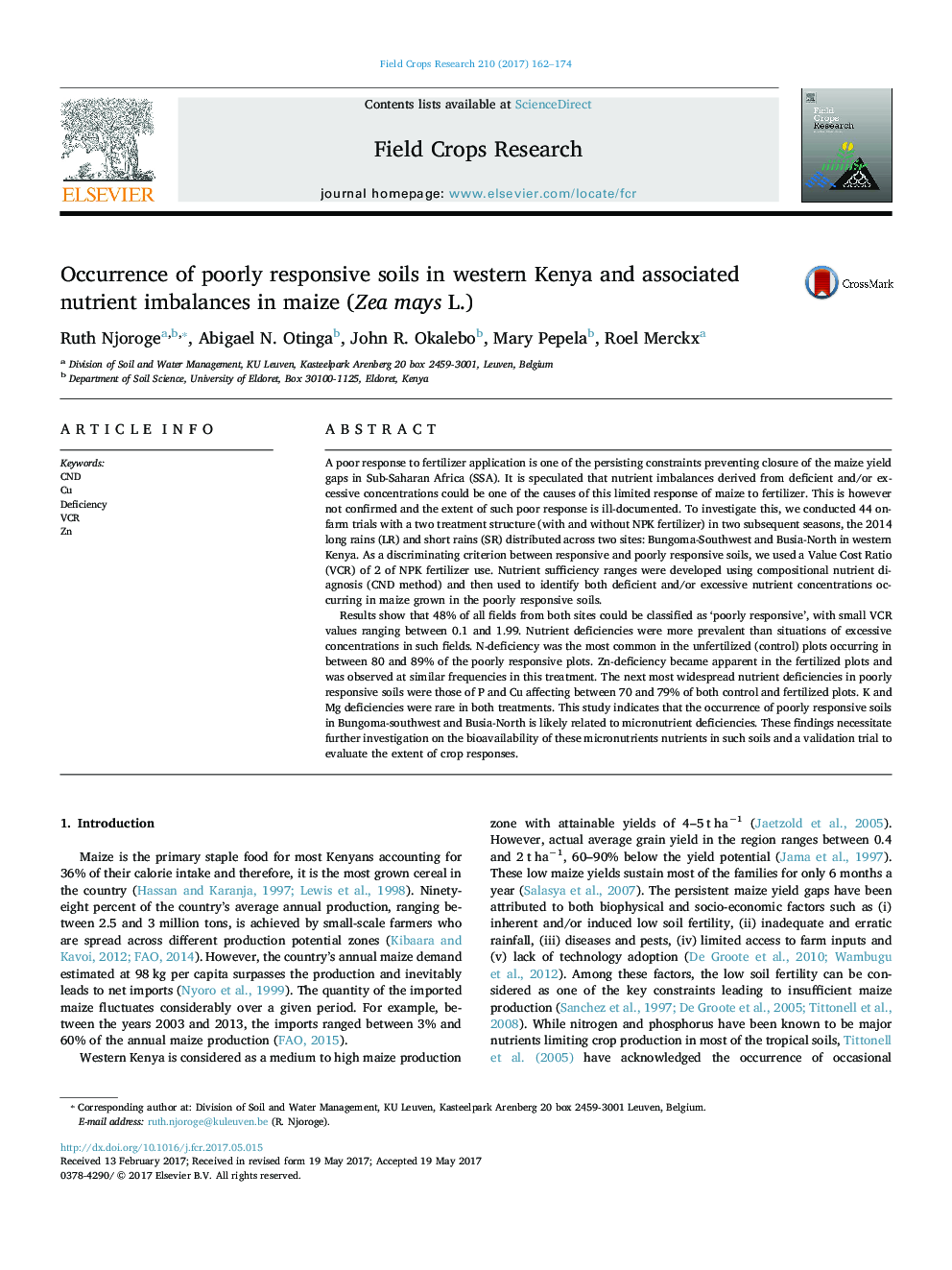| Article ID | Journal | Published Year | Pages | File Type |
|---|---|---|---|---|
| 5761444 | Field Crops Research | 2017 | 13 Pages |
Abstract
Results show that 48% of all fields from both sites could be classified as 'poorly responsive', with small VCR values ranging between 0.1 and 1.99. Nutrient deficiencies were more prevalent than situations of excessive concentrations in such fields. N-deficiency was the most common in the unfertilized (control) plots occurring in between 80 and 89% of the poorly responsive plots. Zn-deficiency became apparent in the fertilized plots and was observed at similar frequencies in this treatment. The next most widespread nutrient deficiencies in poorly responsive soils were those of P and Cu affecting between 70 and 79% of both control and fertilized plots. K and Mg deficiencies were rare in both treatments. This study indicates that the occurrence of poorly responsive soils in Bungoma-southwest and Busia-North is likely related to micronutrient deficiencies. These findings necessitate further investigation on the bioavailability of these micronutrients nutrients in such soils and a validation trial to evaluate the extent of crop responses.
Keywords
Related Topics
Life Sciences
Agricultural and Biological Sciences
Agronomy and Crop Science
Authors
Ruth Njoroge, Abigael N. Otinga, John R. Okalebo, Mary Pepela, Roel Merckx,
